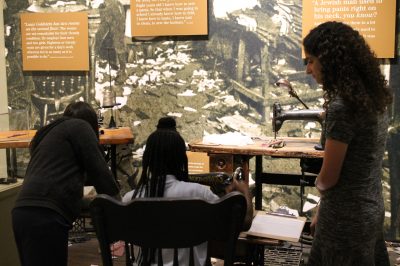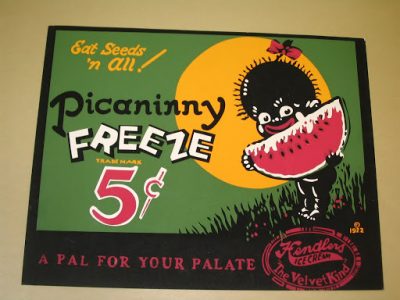Finding History in the Collections

Blog post by JMM intern Ariella Shua. To read more posts from JMM interns, past and present, click here.
I’m not a crazy history buff – I have to hear dates and names multiple times before I can remember them. But I’ve always liked knowing how old something is, or who used to use an item. It’s especially cool when these details connect an object to history we already know.
While working at the JMM, I’ve made a few such discoveries. I wasn’t searching for any particular connection. I was just recording the facts about a person, place, or time. The importance of these items to me, to Jewish history, or even to American history were bonuses that came with the facts I was searching for.
The first moment of historical significance came on my first day at the JMM. As we went on our first tour of the Lloyd Street Synagogue, we were taught its story. The synagogue is the third oldest Jewish house of worship in Maryland, and the third oldest still standing in the US. I’d already known that the JMM had historic objects in their possession. I had no idea that one of those objects was a building. Even better, I was excited to know that I’d now been in two of the top three oldest synagogues in the US. I had fallen asleep in the oldest, Touro Synagogue, a few years before (long story, but I hope to go back and see it for real in the future).
Inside the museum, I spend a lot of time in the “Voices of Lombard Street” exhibit. It provides an immersive walkthrough “tour” of Lombard Street, one of Jonestown’s Jewish neighborhoods, from the early 1900s. When schools and camps visit, I usually guide the kids through the sewing machine activity.

My assumption was that kids would never recognize the machine. But during multiple tour groups, kids tell me about their own experiences, sewing on more modern machines, or seeing old-fashioned sewing machines in their grandmother’s houses. It never occurred to me that an object that seems so obsolete to me is still relevant in many people’s lives, even in a different way.
Most of the historical connections I’ve made have been in the last few weeks. I am working on a project to discover the historical significance of Windsor Hills, a Baltimore neighborhood which large numbers of Jews once called home. While researching, I’ve come across the names of former residents who I know. I don’t know them personally – all I know is their names. Hutzler, Hollander, and Wolman will all be immediately familiar to any other Hopkins student. They all have buildings or rooms named after them at the school. I never expected to run into them at the JMM, yet here they are.
I’m spending a lot of time on PastPerfect, the JMM’s collections database, while I do my Windsor Hills research. Some of the connections I’ve found point to the darker history that was once in Jonestown. While doing an innocent search for ice cream, I came across multiple results for Hendler Ice Cream Company. Most of the records, photos, and ads that showed up in JMM collections are cheery ice cream pictures.

Fortunately, most of my PastPerfect searches have resulted in records that are much less offensive. During my Windsor Hills research, I’ve even found some former residents who have made their mark on American history.

I’d never heard of him before, but I quickly learned that he was the only crew member to participate in both of the Enola Gay’s missions: bombing Hiroshima and Nagasaki. As it turned out, he and his family lived in Windsor Hills, and he was involved in the local Jewish community. Now, some of his former possessions are in the JMM’s collections, telling their history to those who want to find out more.
